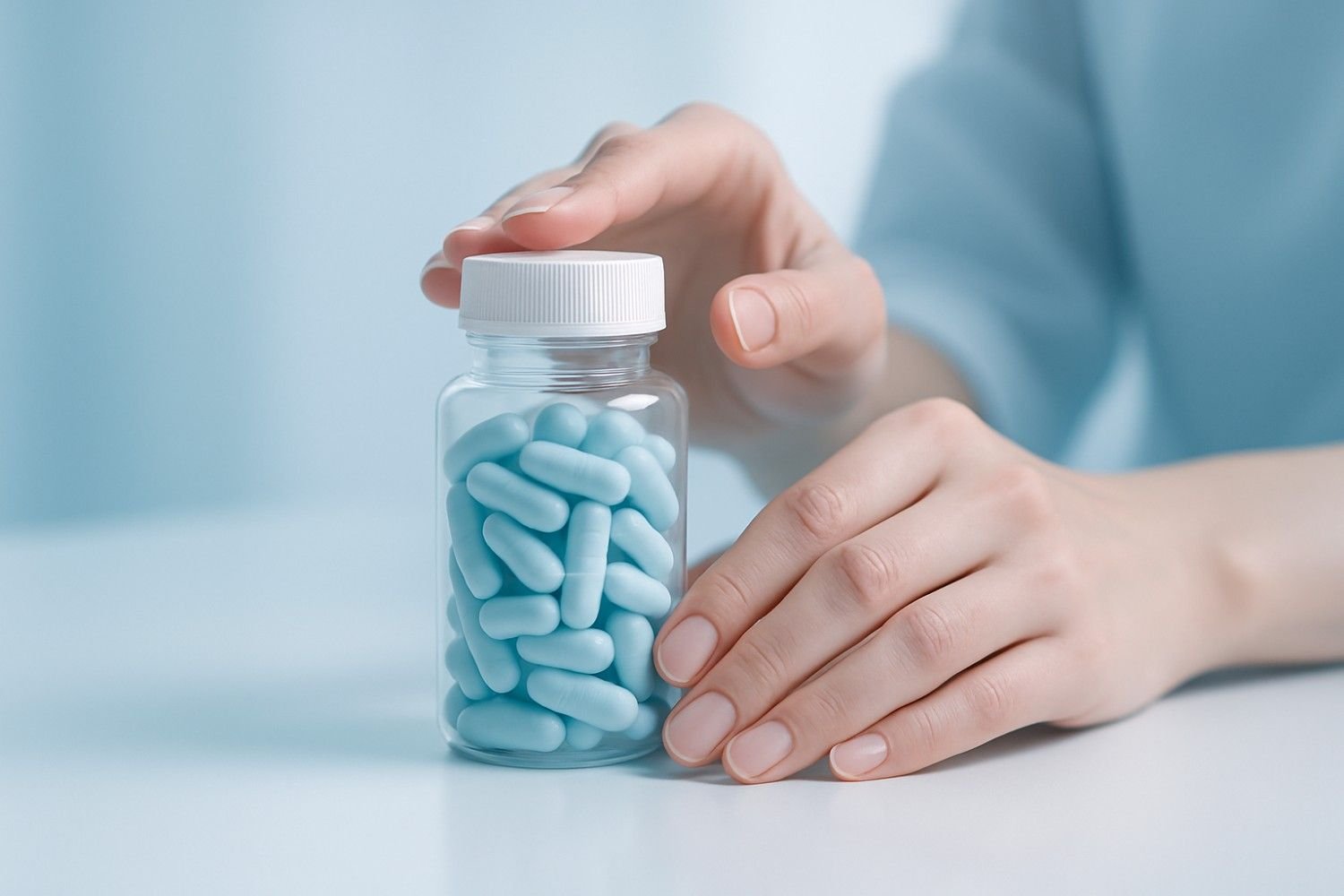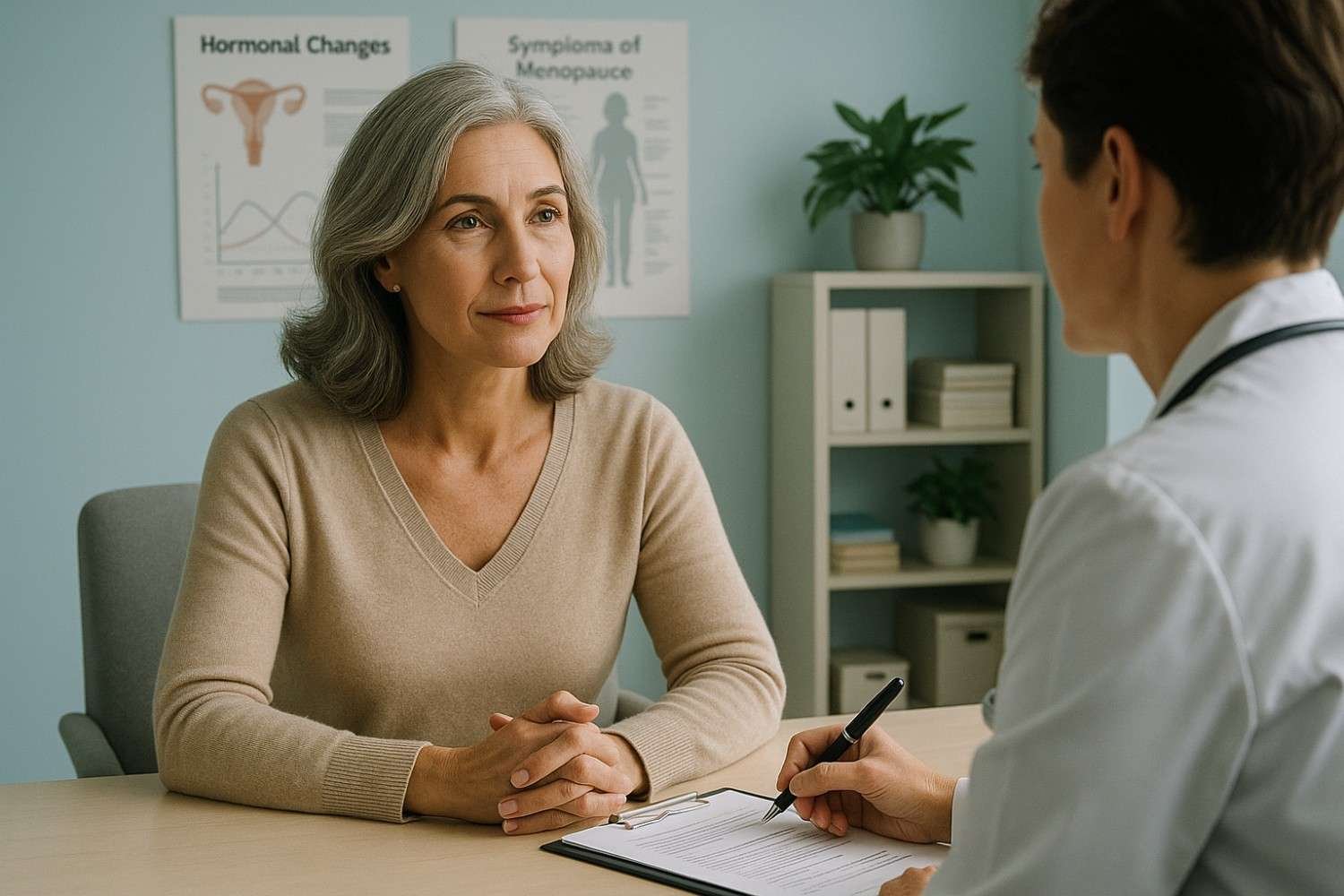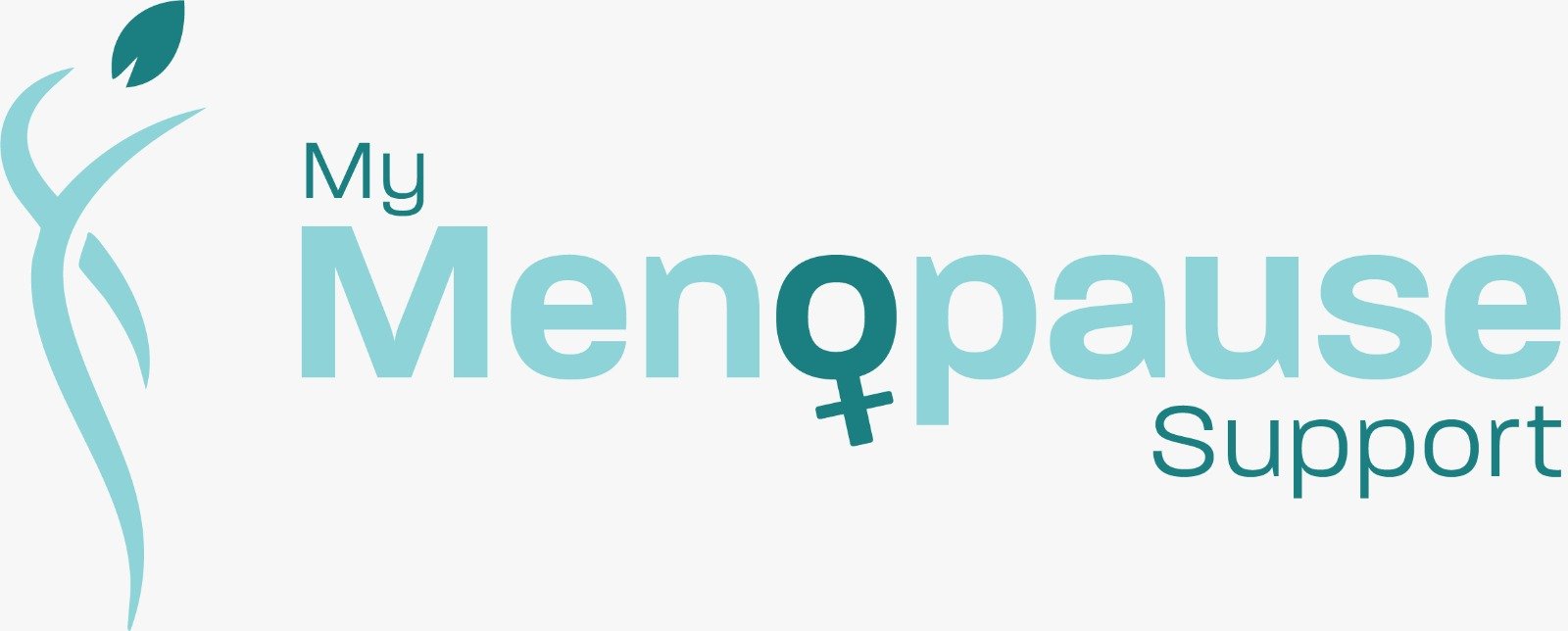What Perimenopause Really Means
Perimenopause is the transition phase before your final period. Hormone levels fluctuate, cycles become irregular, and symptoms like hot flushes, night sweats, brain fog, anxiety and sleep disturbance can appear. This stage can last several years, which is why many women ask whether starting treatment now makes sense rather than waiting for full menopause.
Who Is Most Likely To Benefit From HRT
If you are under 60, within roughly ten years of your final period, or still having irregular cycles with moderate to severe symptoms, you are in the group most likely to benefit from HRT provided there are no contraindications. Authoritative guidance recognises HRT as the most effective treatment for vasomotor symptoms, with an individualised discussion of benefits and risks.
Understanding HRT: The Basics
What Oestrogen Does
Oestrogen replacement treats hot flushes, night sweats, joint aches, brain fog and sleep disruption. It also supports urogenital health and helps protect bone density
Why Some Women Need Progestogen Too
If you have a womb, you will usually need a progestogen alongside oestrogen to protect the lining of the uterus. Without it, oestrogen can thicken the lining over time.
When Testosterone Enters the Picture
Testosterone can be considered in carefully selected women for distressing low sexual desire after other causes are excluded and after a trial of standard HRT. It is not a general tonic for energy, mood or weight.
Types of HRT
Combined vs Oestrogen-Only
- Oestrogen-only HRT is for women without a uterus.
- Combined HRT (oestrogen + progestogen) is for women with a uterus to protect the endometrium.
Cyclical vs Continuous
- Cyclical: Progestogen is taken for part of the month, leading to a scheduled bleed. Often used earlier in perimenopause.
- Continuous combined: Both hormones are taken daily to prevent bleeding. Usually used later in the transition or postmenopause.
Delivery Routes: Patches, Gels, Sprays, Pills, Vaginal Options
- Transdermal oestrogen (patch, gel, spray) delivers hormone through the skin and is associated with a lower risk of blood clots compared with oral forms.
- Oral tablets can suit some women but carry a higher clot risk than transdermal.
- Vaginal oestrogen is very low dose and targets local symptoms like dryness and discomfort with minimal systemic absorption.
For More Details: Types of HRT
Benefits You Can Expect
Vasomotor Symptoms
HRT is the most effective way to reduce hot flushes and night sweats. Many women notice improvements within a few weeks, with full benefit over 2 to 3 months.
Sleep and Mood
Better temperature control and stabilised hormones often improve sleep quality, irritability and brain fog. Targeted psychological therapies can complement HRT where needed.
Urogenital Symptoms and Sexual Health
Oestrogen supports vaginal and urinary tract tissues. Low-dose local oestrogen can relieve dryness, pain with sex and recurrent urinary discomfort, often alongside systemic therapy.
Bone Health
Oestrogen helps maintain bone density and can reduce fracture risk when used at the right time for the right woman.
Risks and How To Minimise Them
Blood Clots and Stroke
Oral oestrogen slightly increases clot risk. Transdermal oestrogen is associated with a lower risk and is preferred for women with risk factors such as higher BMI, migraine with aura or a family history of clots. Your clinician will assess your personal risk profile.
Breast Health
Breast risk varies with age, type, and duration of combined therapy. Your clinician will review your personal and family history, screening status and the type of progestogen used. HRT should be reviewed regularly with shared decision-making.
Bleeding and Other Side Effects
Irregular bleeding is common in the first months, especially with cyclical regimens. Dose or route adjustments usually settle mood changes, breast tenderness or bloating. Any persistent or heavy bleeding needs assessment.
Is HRT Safe During Perimenopause?
Yes, it can be, when tailored to you. Guidance supports offering HRT as a first-line option for bothersome symptoms, with choices on dose and route to optimise benefits and reduce risks. Regular review is advised, often at three months and then annually once stable.
Who Should Not Use HRT
Women with certain conditions may be advised against systemic HRT or need specialist input. These include active or recent hormone-sensitive cancer, unexplained vaginal bleeding, active liver disease, or a recent clotting event. Your individual situation determines the plan.
Getting Ready: Baseline Checks and Monitoring
A good clinic will:
- Take a detailed medical and family history.
- Check blood pressure, weight and BMI.
- Review breast and cervical screening status and arrange tests if needed.
- Agree clear goals and follow-up at three months, then yearly once settled.
Dosing That Fits Your Life
Start low, personalise, then adjust. Many women begin with a low to moderate transdermal oestrogen dose and a body-identical micronised progesterone where suitable. If symptoms persist after several weeks, dose or route can be adjusted. There is no one-size-fits-all schedule.
What If HRT Does Not Suit You? Evidence-Based Non-Hormonal Options
Not everyone can or wants to use HRT. Evidence-based alternatives for vasomotor symptoms include certain non-hormonal medicines and cognitive behavioural therapy for menopause. These approaches can be used alone or with HRT depending on need.
Understanding Testosterone Therapy For Women
Testosterone therapy is sometimes added for women with distressing low sexual desire that persists despite optimised oestrogen and progestogen. Good practice involves:
- Confirming the problem is not due to relationship issues, mood disorders, medications or urogenital discomfort.
- Using licensed or quality-assured preparations at physiological female doses.
- Monitoring blood levels and side effects such as acne or hair changes.
Current consensus is that the only evidence-based indication is hypoactive sexual desire disorder in postmenopausal women, with cautious use in carefully selected perimenopausal cases under specialist guidance.
Lifestyle That Helps HRT Work Better
- Sleep basics: regular schedule, cool bedroom, limit caffeine late.
- Movement: resistance training and impact exercise support bone and mood.
- Nutrition: protein for muscle, calcium and vitamin D for bone, balanced diet for weight management.
- Alcohol and smoking: lowering intake and avoiding smoking helps symptoms and long-term risk.
These habits multiply the benefits of any therapy.
How To Talk To Your Clinician
Go in with a simple brief:
- Top three symptoms and how they limit your day.
- Your medical history, family history and medicines.
- Your preferences on route (for example, patch or gel) and cycle control.
Ask about benefits, risks, what to monitor, when to review, and the plan if first-line therapy does not suit you.
Putting It Together: A Simple Decision Path
- Are symptoms affecting your quality of life?
If yes, discuss HRT as a first-line option if you have no contraindications. - Any risk factors for clots or migraine with aura?
If yes, consider transdermal oestrogen. - Do you have a uterus?
If yes, include a progestogen for endometrial protection. - Persistent low sexual desire despite optimised HRT and relationship or psychosocial support?
Consider a carefully monitored testosterone trial if appropriate. - Prefer not to use hormones or cannot take them?
Consider evidence-based non-hormonal therapies.
Conclusion
HRT can be a safe, effective and life-improving option during perimenopause when it is personalised and properly monitored. The best results come from matching the right dose and route to your symptoms and health profile, reviewing regularly, and supporting treatment with solid lifestyle choices. If hormones are not for you, there are credible alternatives. The most important step is an informed conversation with a clinician who listens and tailors care to your needs.








